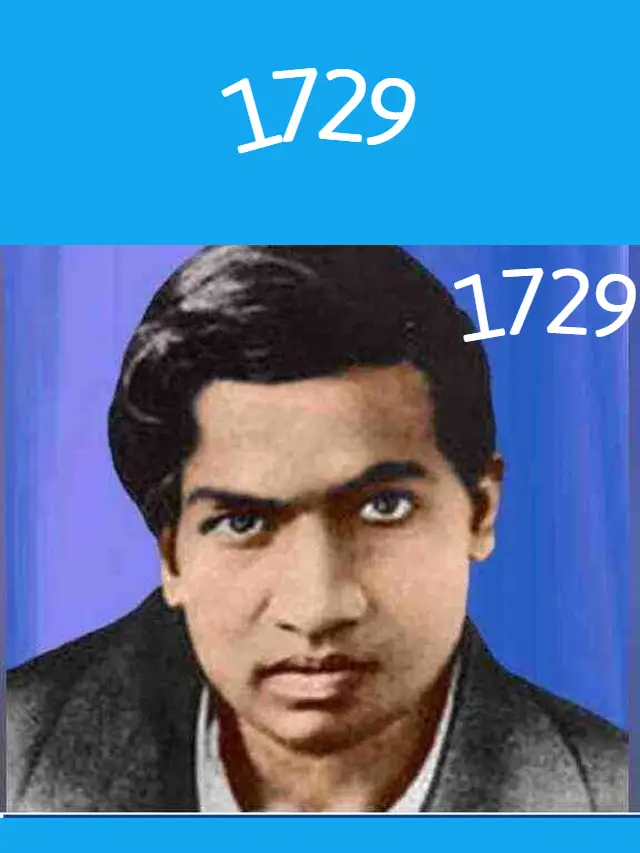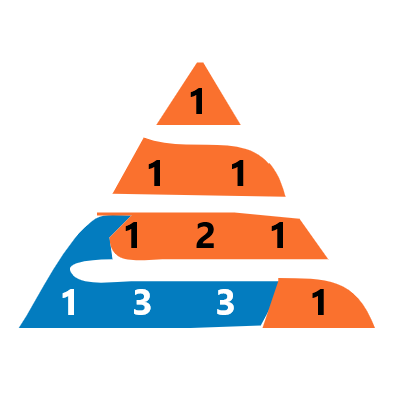1. Some Popular Interesting ,Mysterious and Amazing Numbers in Mathematics
1.Ramanujan No. : 1729

Almost everyone knows about this number. This is the smallest number. Which can be expressed in 2 different ways as the sum of 2 different cubes.
1729 = 10^3 + 9^3 =12^3 + 1^3
Interesting story behind the number 1729
Professor GH Hardy once visited Ramanujan when he was hospitalized after several ailments.
Hardy pointed out at random that he had come in a taxi that had the number 1729 on it which seemed too dull and ordinary to him.
Upon hearing this, Ramanujan immediately indicated without any second thought that 1729 was indeed a special number.
He observed that 1729 is the smallest number that can be represented as the sum of two cubes in two different ways.
1729 =10^3 + 9^3 = 12^3 +1^3
This story is very famous among mathematicians. 1729 is called the Ramanujan-Hardy number”.
2.Kaprekar’s Constant. : 6174
6174 is known as Kaprekar’s constant after the Indian mathematician D. R. Kaprekar
This number can be obtained by this rule:
- Take any four-digit number, using at least two distinct digits (leading zeros are allowed).
- Arrange the digits in descending order and then in ascending order, adding leading zeros, if necessary, to get two four-digit numbers.
- Subtract the smaller number from the larger number.
- Go back to step 2 and repeat.
This rule will always reach its fixed point, 6174, in at most 7 iterations. For example, let’s take the number 1008
8100 – 0018 = 8082
8820 – 0288 = 8532
8532 – 2358 = 6174
7641 – 1467 = 6174
3. π
is a mathematical constant that is the ratio of the circumference of a circle to its diameter, approximately equal to 3.14159. The number appears in many formulas in mathematics and physics. π is irrational number
It is a transcendental number, which means that it cannot be a solution to an equation consisting only of powers, products, sums and integers.
It is impossible to draw a square equal to the area of a circle with a compass and straightedge because π is transcendental
4. The Pingala sequence Or Matra Meru
Matra Meru sequence, in which each number is the sum of the two preceding numbers. The sequence usually begins with 0 and 1. Starting with 0 and 1, the next few values in the sequence are:
0, 1, 1, 2, 3, 5, 8, 13, 21, 34, 55, 89, 144, 233, 377, 610, 987, 1597, 2584, 4181, 6765, 10946, 17711, 28657, 46368, 75025, 121393, 196418, 317811, …
Matra Meru Spiral
When we make squares with those widths, we get a nice spiral:

This spiral is found in nature!

If we take any two successive numbers in the sequence, their ratio gets closer to 1.618 What we call the golden ratio:
3 / 2 = 1.5
13 / 8 = 1.666
55 / 34 = 1.61764
233 / 144 = 1.61805
…
317,811 / 196,418 = 1.61803
watch this video
Video 1
Fibonacci Number – Is it a Hindu number used in Ancient India? Secret of Life | Praveen Mohan |
Video 2
Golden Ratio? ‘Mrityunjaya’ – The Key To Life | Ancient Indian Secret of Vedas | Praveen Mohan
5.1089
Take a 3-digit number made up of different elements (For Example 108).
Subtract the smallest possible number from the chosen 3 digits from the largest possible number to be formed. In our case, it is 810–018 = 792.
Take the answer and reverse it. Now, we have 297.
Lastly, add the inverse number 297 to the result 792 which will always give us 1089.
6.108 – The Secret of Life- By Praveen Mohan
108 – PART II . Ancient Design Revealed?- By Praveen Mohan
Keywords
cool facts about numbers
interesting facts about numbers
Some Mysterious and Amazing Numbers in Mathematics
interesting numbers
